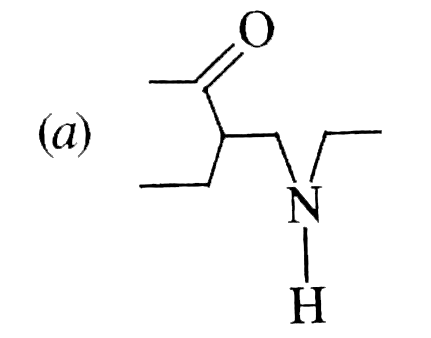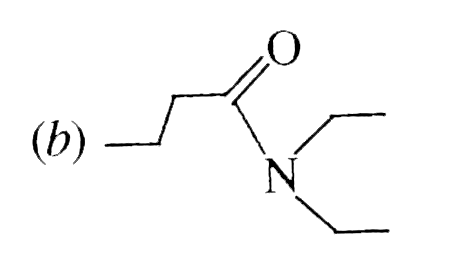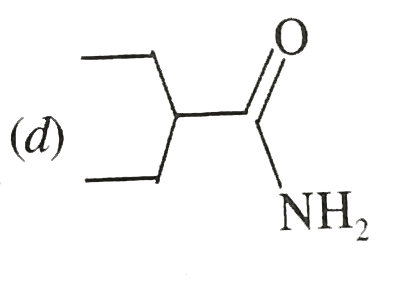Which among the following in an example of tertiary acid amide ?




The correct Answer is:B
To determine which among the given options is an example of a tertiary acid amide, we need to understand the definitions and structures of primary, secondary, and tertiary acid amides.
1. Understand Acid Amides:
- An acid amide is a functional group characterized by the presence of a carbonyl group (C=O) directly attached to a nitrogen atom (N). The general structure is R-CO-NH2 (for primary), R-CO-NHR' (for secondary), and R-CO-NR'R'' (for tertiary).
2. Identify Primary Acid Amide:
- In a primary acid amide, the nitrogen atom is bonded to one carbonyl group and two hydrogen atoms (NH2). This means it has the structure R-CO-NH2.
3. Identify Secondary Acid Amide:
- In a secondary acid amide, the nitrogen is bonded to one carbonyl group and one hydrogen atom, along with one alkyl group (R). The structure is R-CO-NHR'.
4. Identify Tertiary Acid Amide:
- A tertiary acid amide has the nitrogen atom bonded to one carbonyl group and two alkyl groups (R and R'). This means it has the structure R-CO-NR'R''.
5. Analyze the Given Structures:
- Examine each of the provided structures to identify which one fits the definition of a tertiary acid amide:
- Option A: Contains one hydrogen atom attached to nitrogen, indicating it’s a secondary acid amide.
- Option B: The nitrogen is bonded to three carbon atoms, indicating it is a tertiary acid amide.
- Option C: Contains one hydrogen atom attached to nitrogen, indicating it’s a secondary acid amide.
- Option D: Contains two hydrogen atoms attached to nitrogen, indicating it’s a primary acid amide.
6. Conclusion:
- Based on the analysis, Option B is the correct answer as it represents a tertiary acid amide.
- An acid amide is a functional group characterized by the presence of a carbonyl group (C=O) directly attached to a nitrogen atom (N). The general structure is R-CO-NH2 (for primary), R-CO-NHR' (for secondary), and R-CO-NR'R'' (for tertiary).
- In a primary acid amide, the nitrogen atom is bonded to one carbonyl group and two hydrogen atoms (NH2). This means it has the structure R-CO-NH2.
- In a secondary acid amide, the nitrogen is bonded to one carbonyl group and one hydrogen atom, along with one alkyl group (R). The structure is R-CO-NHR'.
- A tertiary acid amide has the nitrogen atom bonded to one carbonyl group and two alkyl groups (R and R'). This means it has the structure R-CO-NR'R''.
- Examine each of the provided structures to identify which one fits the definition of a tertiary acid amide:
- Option A: Contains one hydrogen atom attached to nitrogen, indicating it’s a secondary acid amide.
- Option B: The nitrogen is bonded to three carbon atoms, indicating it is a tertiary acid amide.
- Option C: Contains one hydrogen atom attached to nitrogen, indicating it’s a secondary acid amide.
- Option D: Contains two hydrogen atoms attached to nitrogen, indicating it’s a primary acid amide.
- Based on the analysis, Option B is the correct answer as it represents a tertiary acid amide.
Similar Questions
Knowledge Check
Which among the following is an example of polar molecule ?
AO2BH2CN2DHCl
Which among the following is not an example of secondary structure of protein?
View SolutionWhich among the following is a Lewis acid?
View SolutionWhich among the following is a Lewis acid?
View SolutionWhich among the following is a Lewis acid?
View SolutionWhich of the following is an example for unsaturated fatty acid
View SolutionWhich one among the following is an example of a ferro-electric compound?
View SolutionWhich one among the following is an example for homology ?
View Solution
